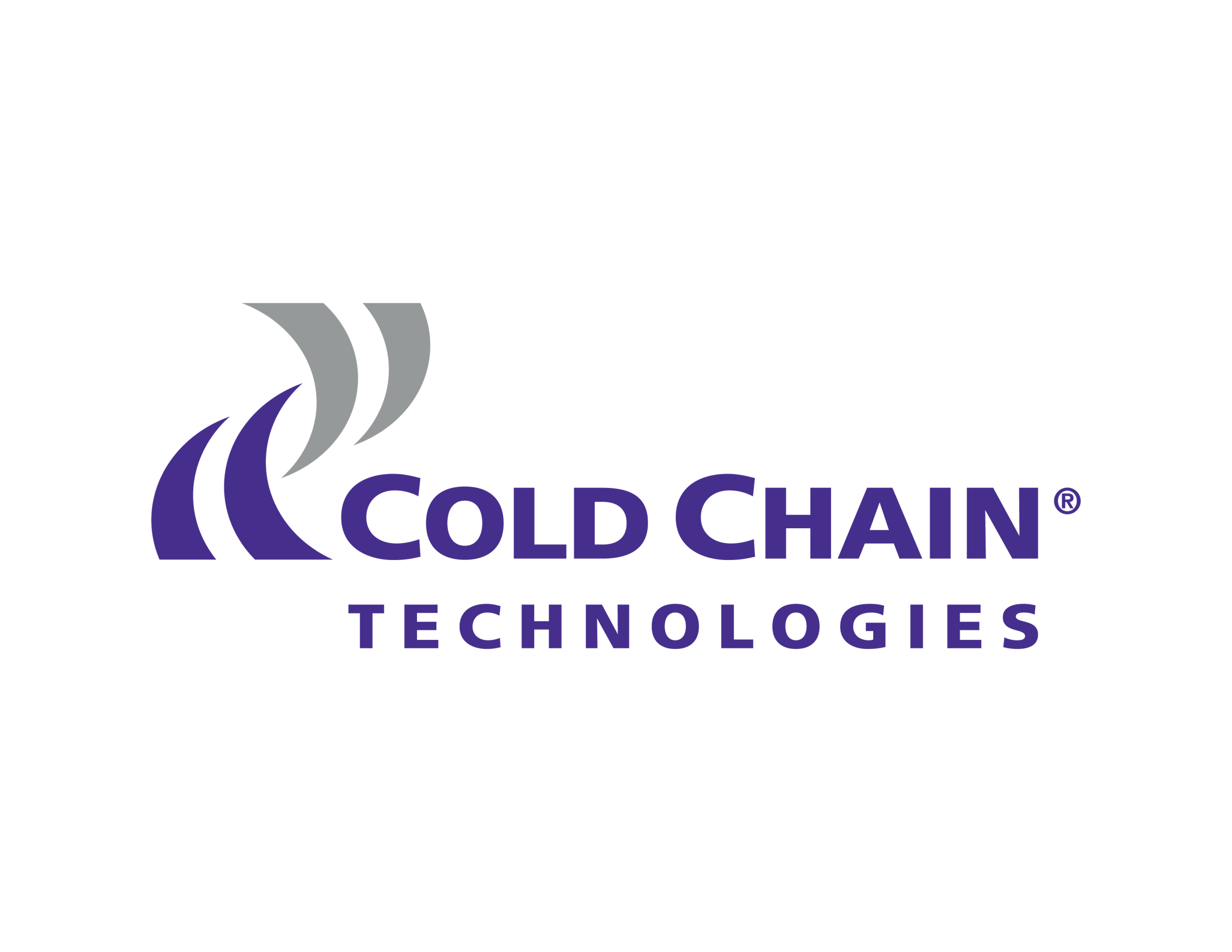Learn best practices to strengthen your cold chain distribution process
The cold chain distribution process is the process by which cold chain products move from the point of manufacturing to the end user. Products typically move across multiple locations including manufacturing, distribution, and storage before reaching the end user.
The cold chain distribution process relies on experts in transporting and distributing cold chain products including third party logistics (3PL), freight forwarders, freight consolidators, wholesalers, and expedited shippers.
When the cold supply chain and its underlying distribution process is running smoothly, we tend to take it for granted.
However, it doesn’t take much for the cold chain distribution process to break down. A slow-down at the manufacturing level, caused by a labor shortage, delays at a border crossing due to incorrect paperwork, or using the wrong type of cold chain packaging can result in financial, product, and reputational damage and loss.
Inherent to a distribution process that works 24/7 365 is in knowing and identifying the risks, flaws, and areas for improvement in your cold chain distribution process – and then taking proactive steps to mitigate these risks.
In this blog we highlight cold distribution process best practices and discuss how these can help you mitigate the risks in the cold chain distribution process.
2022 Cold Supply Chain Predictions
2020 and 2021 stand out for the challenges that overwhelmed global and national supply chains.
We saw headlines about the supply chain across every major newspaper and news website:
Pandemic caused perfect storm for supply chain crisis, experts say (The Guardian) A survey of consumers found that 45% of Americans admitted to never thinking about how their products were made and delivered before the pandemic.
Supply chain chaos is already hitting global growth. And it’s about to get worse (CNBC)…power shortages in China have affected production in recent months, while in the U.K., Brexit has been a big factor around a shortage of truck drivers. The U.S. is also battling a shortage of truckers, as is Germany, with the former also experiencing large backlogs at its ports.
How the supply chain broke, and why it won’t be fixed anytime soon (NY Times) The steep surge in demand clogged the system for transporting goods to the factories that needed them. At the same time, finished products – many of them in China – piled up in warehouses and at ports throughout Asia because of a profound shortage of shipping containers.
- Global and national supply chains will continue to be chaotic, congested, and tenuous. Labor shortages, a lack of raw materials, and inconsistent global pandemic restrictions make it difficult for manufacturers, shippers, and distributors to create consistent and reliable supply chain processes.
- Online shopping and the ecommerce boom will force companies to rethink how they manage customer expectations for same-day home delivery. From a boom in home-delivery of meal kits sparking an increased demand for reusable and recyclable insulated containers to huge demand for last mile delivery companies, ecommerce is a major challenge globally and nationally.
- The continuing labor shortage will force companies to rethink their distribution processes and invest in new technologies to fill gaps and improve efficiencies. With a shortage of people to load and drive trucks, deliver goods, and even stock store shelves, automation (autonomous mobile robots), machine learning and predictive analysis, just-in-time delivery, and continuous improvement will play a prominent role within the cold supply chain management process.
- The consumer and investor demand for sustainable packaging and distribution processes will strengthen the importance of supply chain logistics and management. B2B and B2C customers are tired of excessive packaging that cannot be reused and repurposed. Customers care about how their products are sourced, manufactured, packaged, and moved – helping raise the profile of cold supply chain packaging experts.
6 Risks in the Cold Chain Distribution Process
As you review your cold chain distribution process and look for areas of improvement, remember these 6 core risks in the cold chain distribution process
Equipment failure and poor thermal packaging decisions are the biggest risks to your cold chain products. A cold chain best practices GAP analysis can help you mitigate these risks and protect you from loss.
Lack of cold chain infrastructure can make even the most advanced cold chain technology ineffective.
Insufficient regulatory knowledge, compliance, and due diligence can create delays in document approval, customs clearance, and even prevent port entry.
Natural disasters, pandemics, and unexpected threats can cause a complete break-down in the cold supply chain. It’s critical you understand how these threats trickle-down into your cold chain distribution process – labor shortages, port backlogs, manufacturing slowdowns, travel restrictions, and consumer expectations.
Logistics beyond your control including traffic slowdowns, clogged transport hubs, improper handling of goods, hardware and coolant failure, and more comprise successful shipping, delivery, warehousing, and storage of your cold chain products.
Human error and mistakes in the handling and care of your cold chain products are difficult to predict and can damage even the best cold chain distribution process and thermal packaging practices.
How to Define your Cold Chain Distribution Process
To define your cold chain distribution process, ask the following questions about each element in your cold chain distribution process:
Storage questions:
- Why am I using the cold chain storage equipment and facilities I’m using?
- Do these storage facilities meet the needs of my current range of cold chain products? Are there new solutions or technologies that can improve how my products are stored and warehoused?
- Were there any instances when our cold chain storage equipment and facilities failed, resulting in financial, product, and reputational damage?
Packaging questions:
- Where are the risks in my cold chain packaging?
- What feedback am I getting from customers about sustainability, reusability, and repurposing my packaging?
- What are the latest technologies in cold chain packaging?
- Are there supply chain issues in ordering and receiving the packaging my products need?
Tracking questions:
- Where are my cold chain products right now?
- How much visibility do we have into our cold chain distribution process?
- What is our plan if our products are stuck at ports, delayed at customs, or lost?
- How are we monitoring the temperature and environments of our temperature-sensitive products?
Transportation questions:
- What is the success rate of the 3PL, shipping, freight, and transport companies we trust with moving our cold chain products? What are their weak points?
- Do the companies we rely on to transport and distribute our products have disaster management plans and processes?
- Are the companies we work with using sustainable processes? Does this matter to us and our customers?
Customs Clearance questions:
- Have we experienced disruptions and slowdowns because of errors we’ve made with our customs clearance documentation and requirements?
- How does Brexit impact how we move and deliver products?
- What is the dollar cost associated with delays at customs and other transport hubs?
Product Management questions:
- Do we have enough skilled people to ensure we can manufacture, package, and manage our cold chain products?
- What types of labor shortages have we experienced in the last two years? What were the impacts of these labor shortages?
- Is there an opportunity to integrate automation, machine learning or AI, or just-in-time delivery practices to improve our efficiencies?
- What are the security risks within our cold chain distribution process?
Delivery:
- Are we able to deliver our cold chain products to customers on-schedule?
- What is the status of our products when they are delivered to customers?
- What is the satisfaction rate of our customers? What are they telling us about our products and their intent to reorder from us?
- Do we have a reliable system of warehousing, transportation, distribution, and product management?
2022 Cold Chain Distribution Process Best Practices
There are no guarantees in your cold supply chain. Pandemics, natural disasters, labor shortages, tariffs, fluctuating consumer demand, and more have the power to weaken even the strongest cold chain distribution process.
These 2022 cold chain distribution process best practices can help you build a cold supply chain that is ready to meet the demands of the year ahead while helping you mitigate risk:
- Maintain the integrity of temperature-sensitive good and products: use the right cold chain packaging for the right reasons. Ensure the packaging is fit-for-purpose and is the right choice for your cold chain products and how they move through the cold supply chain.
- Put a priority on product safety: this is your top priority and is central to choosing the right cold chain packaging for your products, distribution environment, and customers. Effective temperature control and monitoring means your standards and regulatory standards are met – keeping people safe (and protecting your brand and company reputation).
- Focus on reducing waste and loss: there are two aspects to this – reducing product waste and loss and limiting the environmental impacts of your packaging and distribution process. Take the time to research how you can best protect your cold chain products with the latest in reusable packaging solutions. Remember your customers care about how products are packaged, sourced, and manufactured – using sustainable packaging and supply chain best practices can help build strong brand loyalty while protecting you from product waste and loss.
- Always be looking for room for improvement: improving efficiency at every phase of your cold chain distribution process is critical to your 2022 success. Customers have grown wary of supply chain slowdowns and want to partner with companies who can guarantee high-quality products will arrive on-time. Take advantage of integrated smart IoT-enabled tracking and monitoring, autonomous technologies, predictive analysis, and just-in-time delivery to reduce costs, minimize waste, and mitigate risks in moving goods and products.
- Stay updated with the latest compliance and regulatory standards: compliance with regulations governing the safe manufacture, transport, delivery, and storage of temperature-sensitive products is a must. Make sure you and your team know the latest FDA, CDC, Canadian, EU, and World Health Organization standards and regulations.
If we have learned anything from the past two years – it is to never take the success of the cold supply chain for granted. The companies who have remained successful despite recent (and ongoing) supply chain chaos are those who are constantly analyzing, reviewing, and adjusting how they operate.
Remember your cold chain distribution process cannot be static. Make it a priority in 2022 to always be looking for ways to improve efficiencies to better meet the demands of your customers while strengthening your long-term future.
We’re excited about 2022 and how we can be part of enabling your successful and profitable cold chain distribution process.
Sign up for Cold Chain Tech blog updates to learn the latest in cold chain packaging, management, distribution processes and how the Cold Chain Tech team helps you maintain the integrity, safety, and quality of your temperature-sensitive products.


